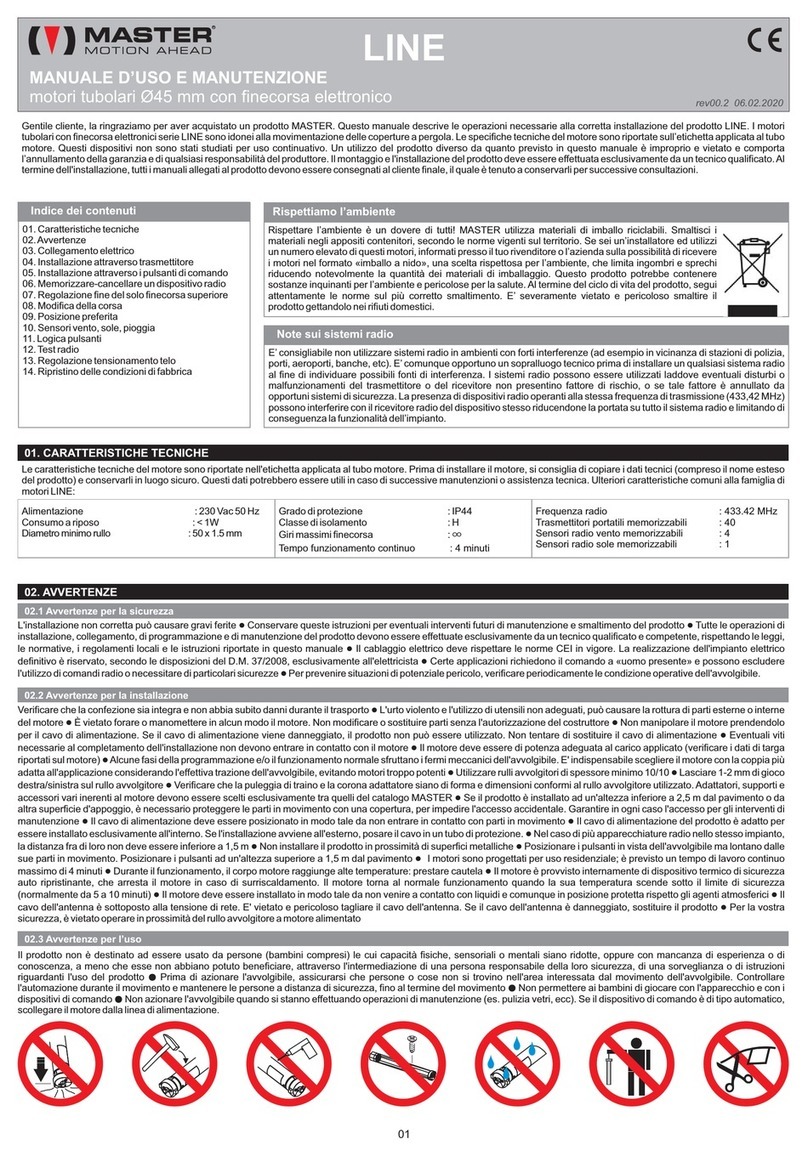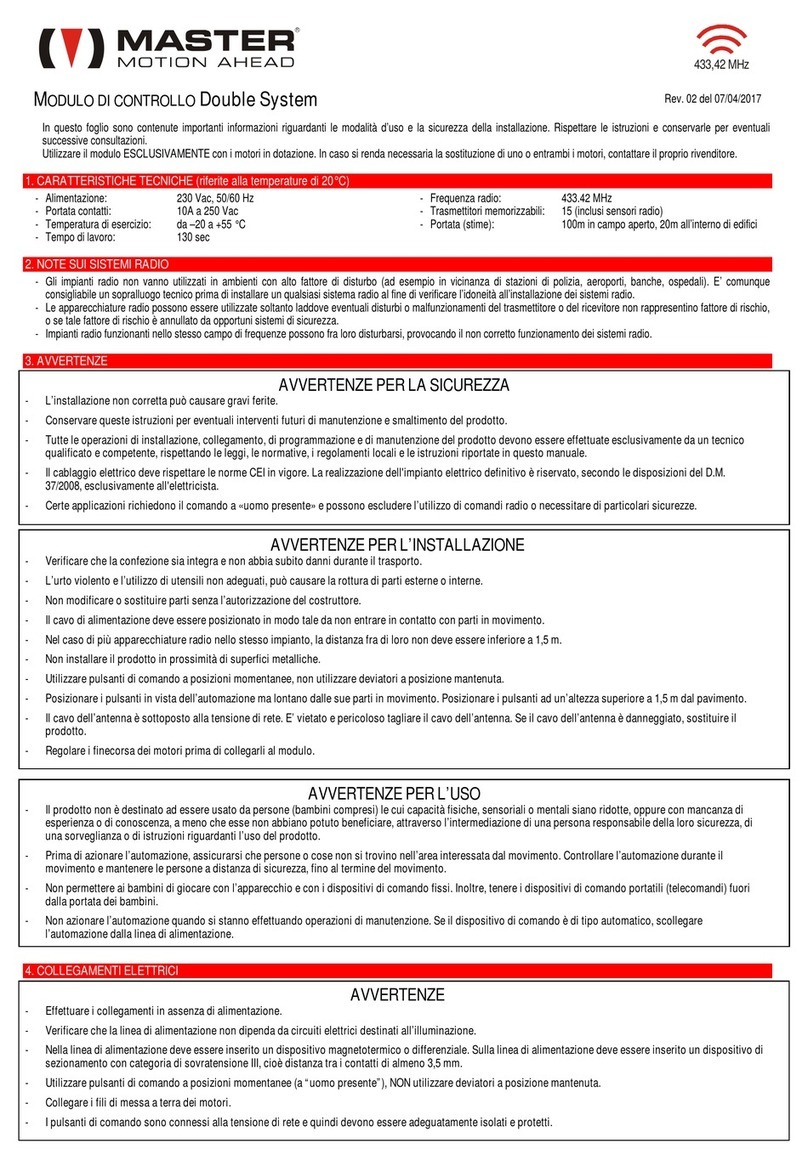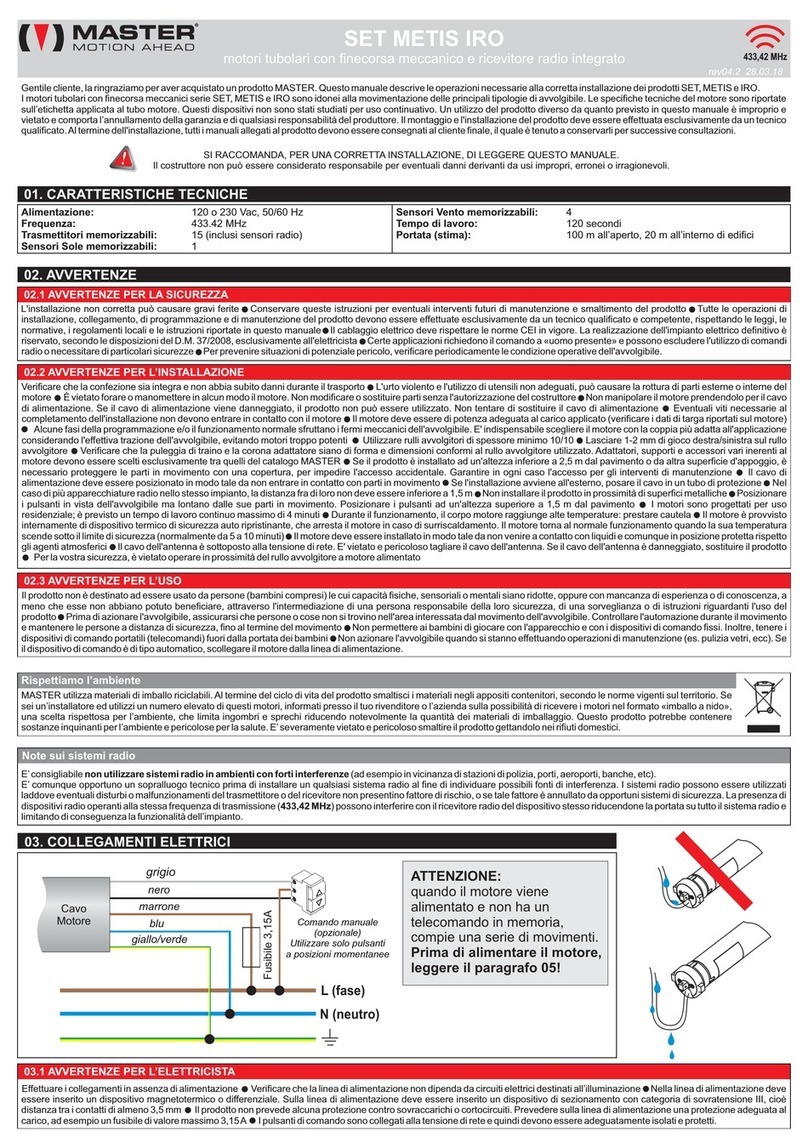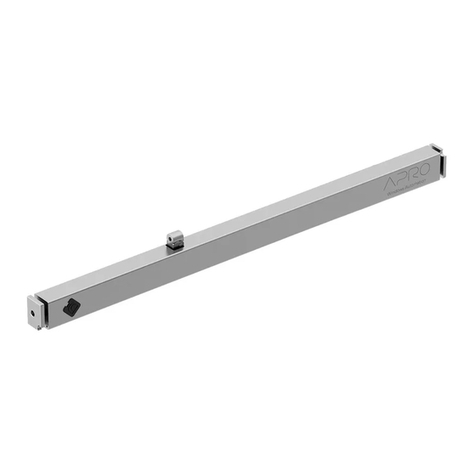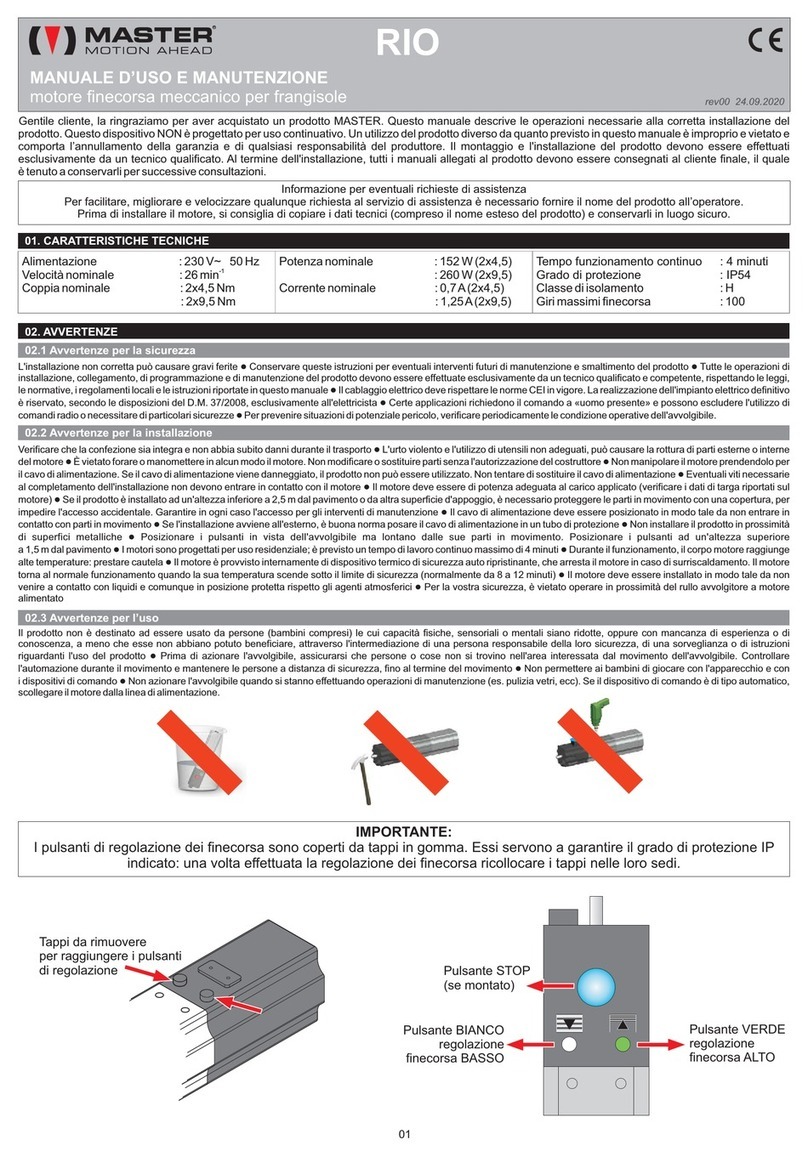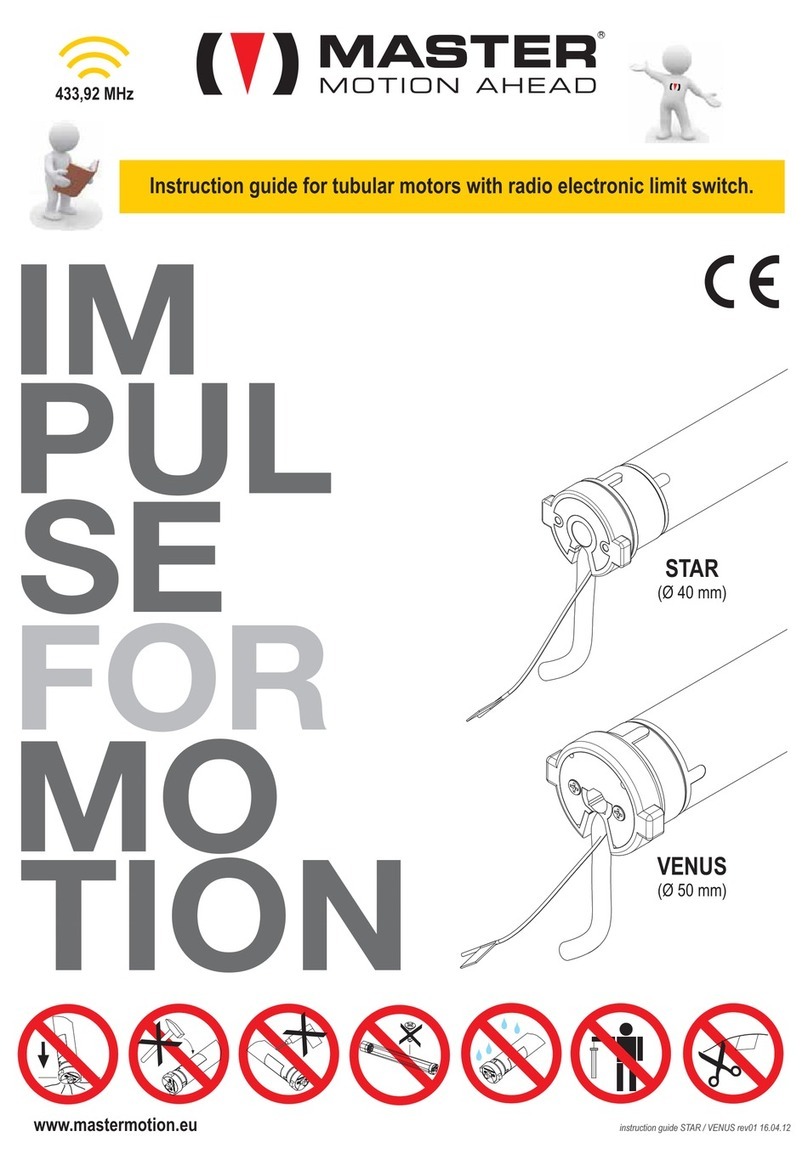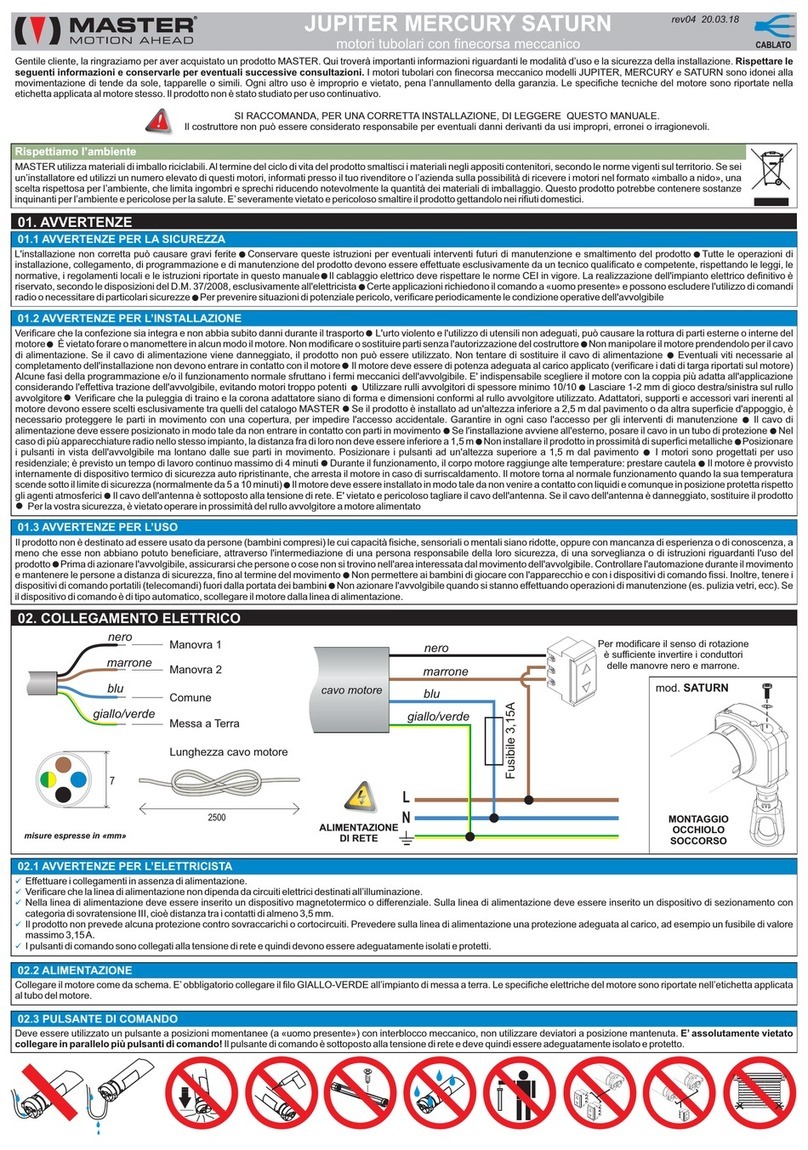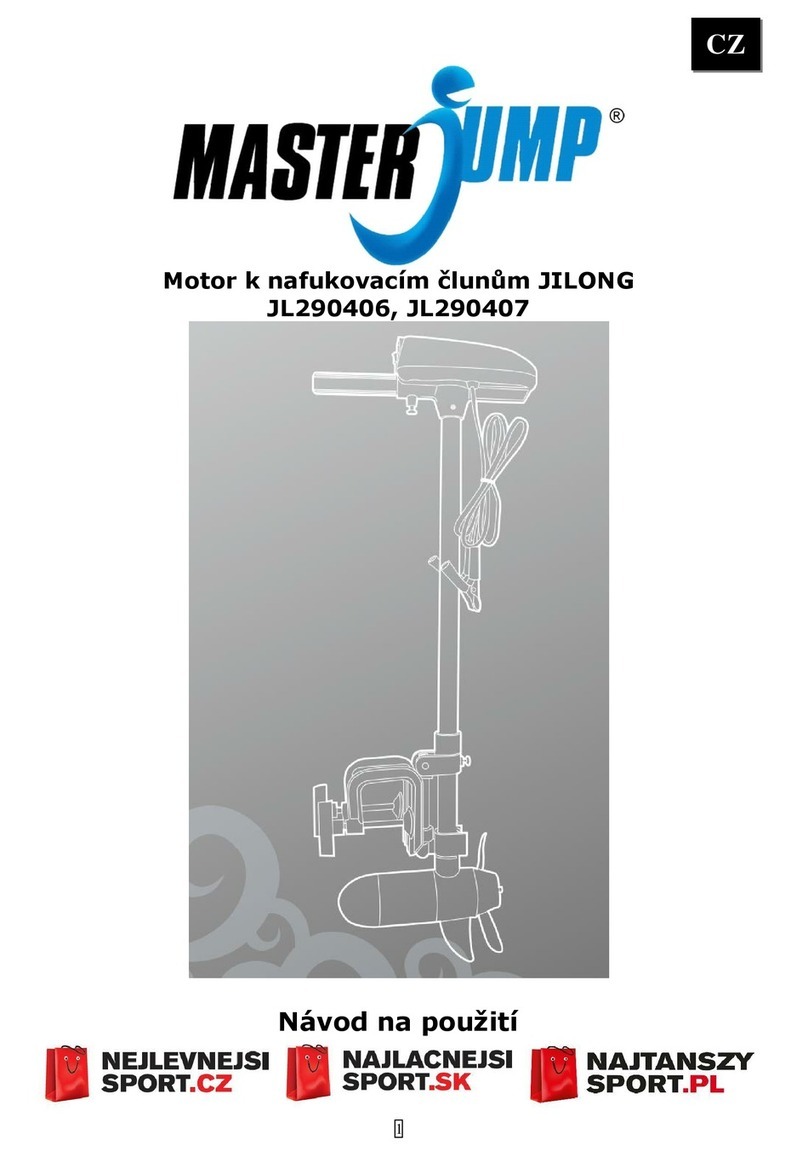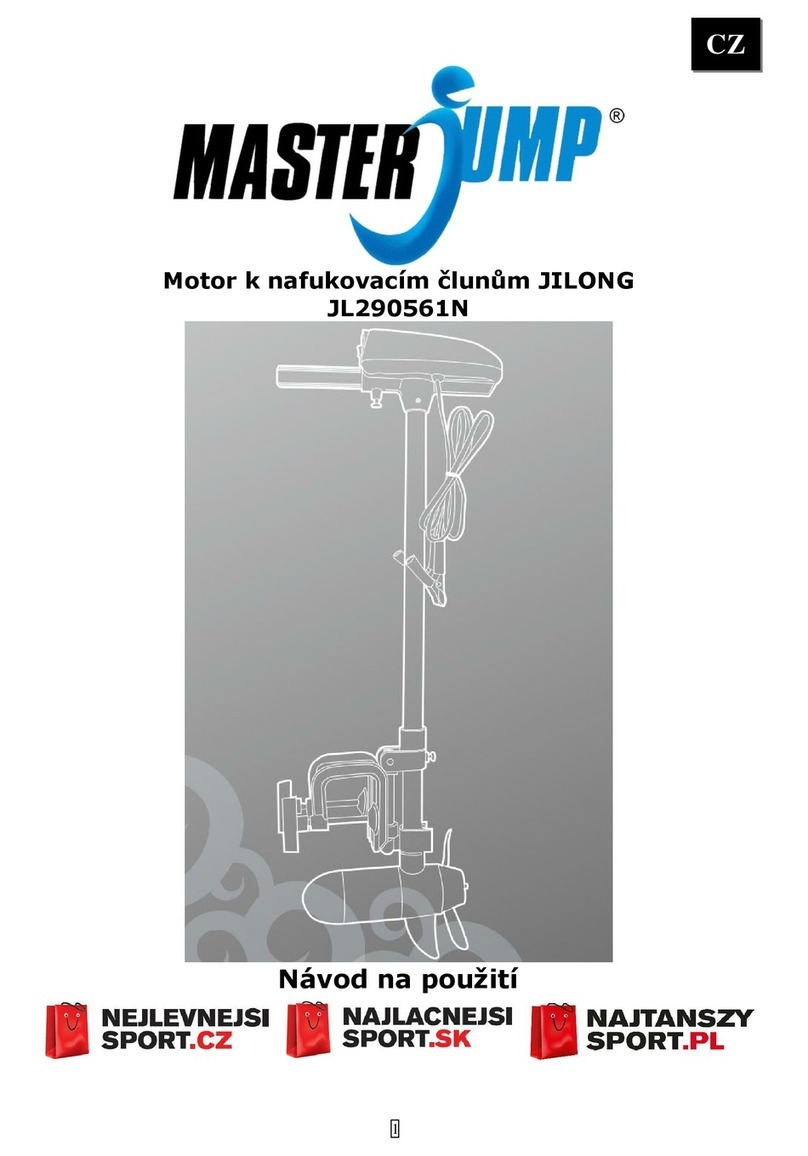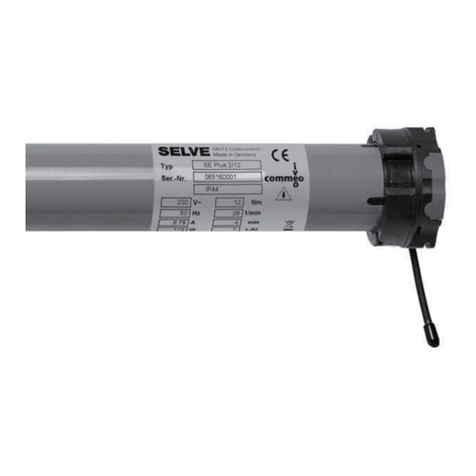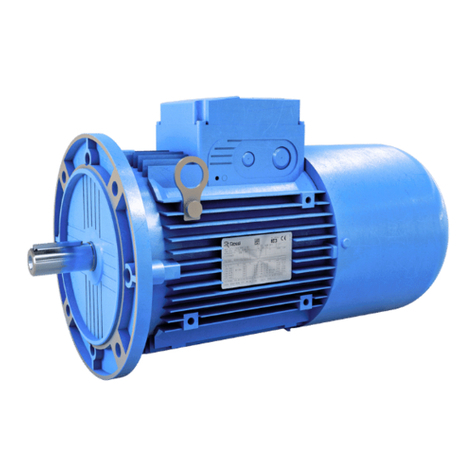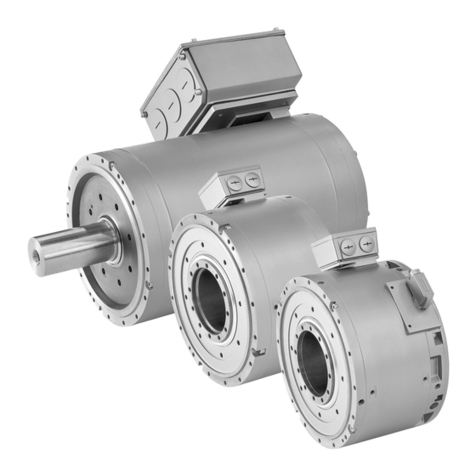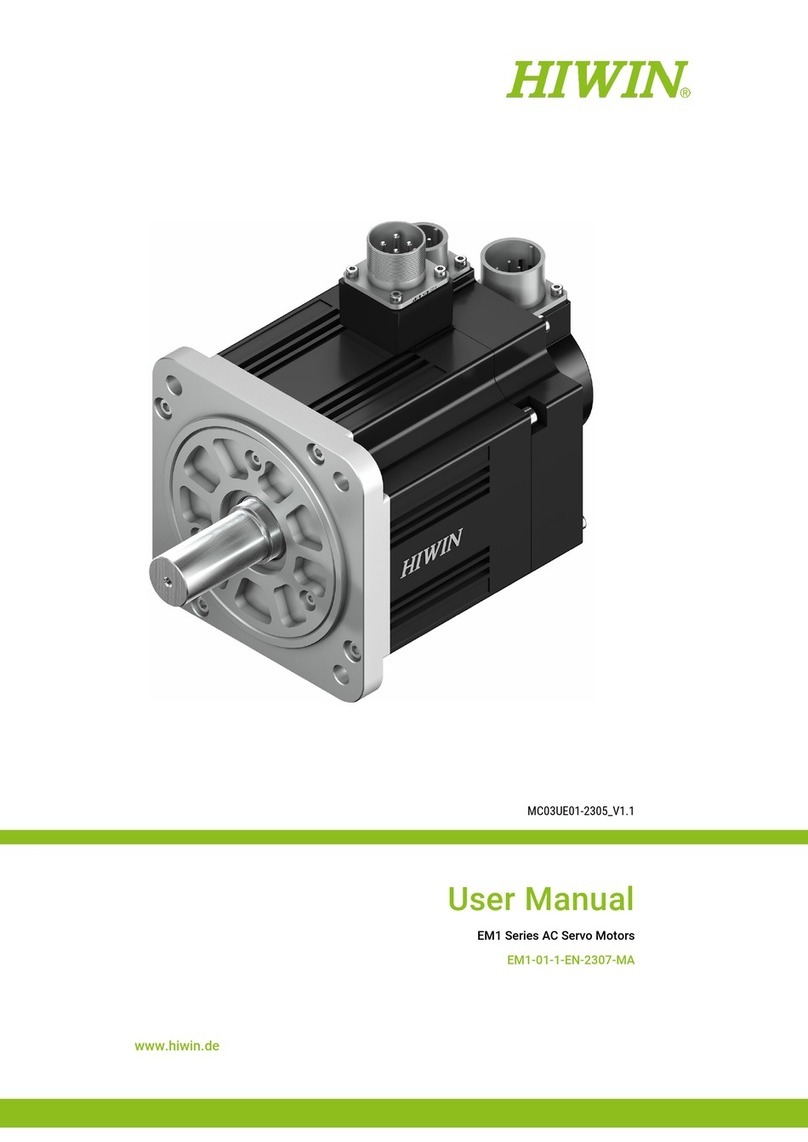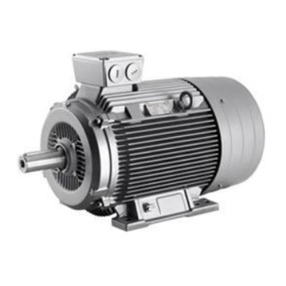
09
01. Se possibile, porta il motore in posizione intermedia.
02. Togli alimentazione.
03. Collega come da schema a lato.
04. Alimenta il motore. Dopo 30 secondi il motore segnala SU-GIU: reset effettuato!
05. Togli alimentazione.
06. Ripristina i collegamenti. (VEDI schema alla sezione 5)
07. Installa nuovamente il motore (vedi sezione 6 di questo manuale).
12.2 UTILIZZANDO I PULSANTI DI COMANDO
01. Porta il motore in posizione intermedia.
02. Premi MENU per circa 5 sec, sul display
compare la scritta «rS».
03. Premi 2 volte PREV e 9 volte NEXT, sul
display compare «29».
04. Premi STOP. Il display lampeggia, il
motore effettua dei movimenti.
05. Premi assieme PREV e NEXT per circa 2
secondi, finché il motore segnala che il
reset è stato effettuato (1 movimento
su/giù).
06. Installa nuovamente il motore (vedi
sezione 6 di questo manuale).
01. Porta il motore in posizione intermedia.
02. Mantenendo premuto STOP premi anche
PROG per circa 1 sec, finché i led si
accendono.
03. Premi 2 volte SU e 9 volte GIU.
04. Premi STOP. I led lampeggiano, il motore
effettua dei movimenti.
05. Premi assieme SU e GIU per circa 2
secondi, finché il motore segnala che il
reset è stato effettuato (1 movimento
su/giù).
06. Installa nuovamente il motore (vedi
sezione 6 di questo manuale).
01. Porta il motore in posizione intermedia.
02. Premi MENU, sul display compare la
scritta «Menu Rx».
03. Premi 2 volte PREV e 9 volte NEXT. Sul
display compare «29».
04. Premi STOP. l display lampeggia, il
motore effettua dei movimenti.
05. Premi assieme PREV e NEXT per circa 2
secondi, finché il motore segnala che il
reset è stato effettuato (1 movimento
su/giù).
06. Installa nuovamente il motore (vedi
sezione 6 di questo manuale).
Consulta il manuale del
tuo trasmettitore alla
voce:
«MENU RICEVITORE -
FUNZIONE 29 -
Reset del ricevitore»
cavo
5 poli
grigio
marrone
blu
giallo/verde
nero
L
N
Trasmettitori ARCO Trasmettitori FLUTE, KUADRO, KORT Trasmettitori VISIO Altri trasmettitori...
12.1 UTILIZZANDO IL TRASMETTITORE
12. RIPRISTINO DELLE CONDIZIONI DI FABBRICA (reset)
ATTENZIONE:
se il motore viene resettato in prossimità del finecorsa superiore o in prossimità dei ganci, la segnalazione potrebbe essere diversa da quanto indicato
13. COMPATIBILITÀ CON I SENSORI RADIO
14. TEST RADIO
Numero movimenti Impostazione
1
2*
Non attivo
Attivo
*impostazione di fabbrica
Trasmettitori ARCO Trasmettitori FLUTE, KUADRO, KORT Trasmettitori VISIO Altri trasmettitori...
01. Porta il motore in posizione intermedia.
02. Premi MENU per circa 5 sec, sul display
compare la scritta «rS».
03. Premi 1 volta PREV e 7 volte NEXT.
Sul display compare «17».
04. Premi STOP. Il motore segnala:
1 su = non attivo, 2 su = attivo.
05. Per disattivare: premi PREV
Per attivare: premi NEXT
06. Premi STOP. Il motore segnala:
1 su = non attivo, 2 su = attivo.
01. Porta il motore in posizione intermedia.
02. Mantenendo premuto STOP premi anche
PROG per circa 1 sec, finché i led si
accendono.
03. Premi 1 volta SU e 7 volte GIU.
04. Premi STOP. Il motore segnala:
1 su = non attivo, 2 su = attivo.
05. Per disattivare: premi GIU
Per attivare: premi SU
06. Premi STOP. Il motore segnala:
1 su = non attivo, 2 su = attivo.
01. Porta il motore in posizione intermedia.
02. Premi MENU, sul display compare la
scritta «Menu Rx».
03. Premi 1 volta PREV e 7 volte NEXT.
Sul display compare «17».
04. Premi STOP. Il motore segnala:
1 su = non attivo, 2 su = attivo.
05. Per disattivare: premi GIU
Per attivare: premi SU
06. Premi STOP. Il motore segnala:
1 su = non attivo, 2 su = attivo.
Consulta il manuale del
tuo trasmettitore alla
voce:
«MENU RICEVITORE -
FUNZIONE 17»
Quando nel motore viene memorizzato un sensore vento o sole/vento radio, si attiva automaticamente un controllo di
comunicazione tra il sensore radio ed il motore. Se la comunicazione viene a mancare per più di 120 minuti, il motore
effettua una manovra di salita a protezione dell'avvolgibile. Questa manovra automatica viene eseguita ogni 120 minuti fino
al ripristino della comunicazione radio. La fabbrica consiglia di mantenere attivo il “test radio” al fine di individuare in tempo
utile eventuali malfunzionamenti del sensore radio.
Per modificare questo parametro:
La presenza di sistemi di aggancio è incompatibile con comandi di tipo automatico. Pertanto:
Se il motore è installato come “GANCI MANUALI” la memorizzazione di sensori radio è vietata.
Se il motore è installato come “GANCIAUTOMATICI” o “GANCI KLIVER” la memorizzazione di sensori radio è consentita .ma sconsigliata
I sensori generano delle manovre automatiche senza preavviso che possono essere fonte di pericolo. E’ compito dell’installatore informare l’utilizzatore finale ed eventualmente
integrare nell’installazione adeguati sistemi di sicurezza. In alcune situazioni (ad esempio perdita di tensione del motore o del sensore, guasto del motore o del sensore, disturbi
radio...) è possibile che il comando impartito dal sensore non venga rilevato dal motore. Il sensore quindi non deve essere inteso come un dispositivo di sicurezza atto a garantire in
ogni condizione l’integrità dell’avvolgibile, ma un mezzo per ridurre la probabilità che l’avvolgibile venga danneggiato da eventi atmosferici avversi.
Utilizzare i sensori serie BLAST o BLAST BT o SHAKE (sensore vento), VEGA o VEGA BT (sensore sole/vento), THANK YOU (sensore sole), X11C (sensore pioggia) associato
all’alimentatore At12. Quando il sensore rileva presenza di vento, viene inviato il messaggio «allarme vento», i motori sintonizzati si azionano in salita ed i comandi manuali vengono
inibiti fino al termine dell’allarme. Quando il sensore rileva presenza di sole, viene inviato il messaggio «sole presente», i motori sintonizzati si azionano in discesa. Quando il sensore
rileva assenza di sole, viene inviato il messaggio «sole assente», i motori sintonizzati si azionano in salita. Quando il sensore rileva presenza di pioggia, viene inviato il messaggio
«pioggia presente», i motori sintonizzati si azionano in salita o in discesa, in base all’impostazione sul sensore pioggia. Ciascun motore può memorizzare fino a 4 sensori vento, 1 solo
sensore sole. Per ulteriori informazioni consultare il manuale dei sensori.
15. LOGICA PULSANTI
I pulsanti di comando possono funzionare in logica IMPULSO oppure in logica UOMO PRESENTE.
IMPULSO: per muovere il motore premere un pulsante per almeno 0,5 secondi, per arrestare il motore premere
brevemente (meno di 0,5 secondi) uno dei due pulsanti.
UOMO PRESENTE: per muovere il motore premere un pulsante per almeno 0,5 secondi, per arrestare il motore rilasciare
il pulsante.
La fabbrica imposta il motore per lavorare in logica IMPULSO.
ATTENZIONE: se si sta eseguendo un comando a uomo presente e interviene un comando radio, il motore interrompe la
manovra a uomo presente ed esegue la nuova manovra: il comando radio ha la priorità.
Trasmettitori ARCO Trasmettitori FLUTE, KUADRO, KORT Trasmettitori VISIO Altri trasmettitori...
01. Porta il motore in posizione intermedia.
02. Premi MENU per circa 5 sec, sul display
compare la scritta «rS».
03. Premi 1 volta PREV e 8 volte NEXT.
Sul display compare «18».
04. Premi STOP. Il motore segnala:
vedi tabella
05. Per selezionare «impulso»: premi PREV
Per selezionare «uomo p.»: premi NEXT
06. Premi STOP. Il motore segnala:
vedi tabella
01. Porta il motore in posizione intermedia.
02. Mantenendo premuto STOP premi anche
PROG per circa 1 sec, finché i led si
accendono.
03. Premi 1 volta SU e 8 volte GIU.
04. Premi STOP. Il motore segnala:
vedi tabella
05. Per selezionare «impulso»: premi GIU
Per selezionare «uomo p.»: premi SU
06. Premi STOP. Il motore segnala:
vedi tabella
01. Porta il motore in posizione intermedia.
02. Premi MENU, sul display compare la
scritta «Menu Rx».
03. Premi 1 volta PREV e 8 volte NEXT.
Sul display compare «18».
04. Premi STOP. Il motore segnala:
vedi tabella
05. Per selezionare «impulso»: premi GIU
Per selezionare «uomo p.»: premi SU
06. Premi STOP. Il motore segnala:
vedi tabella
Consulta il manuale del
tuo trasmettitore alla
voce:
«MENU RICEVITORE -
FUNZIONE 18»
Numero movimenti Impostazione
1*
2
Impulso
Uomo presente
*impostazione di fabbrica
